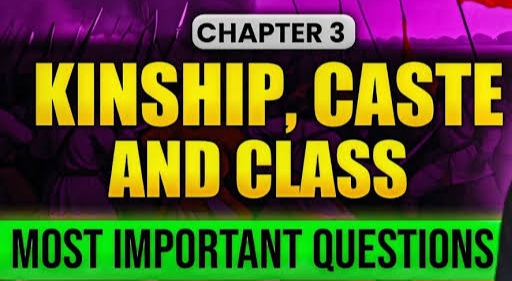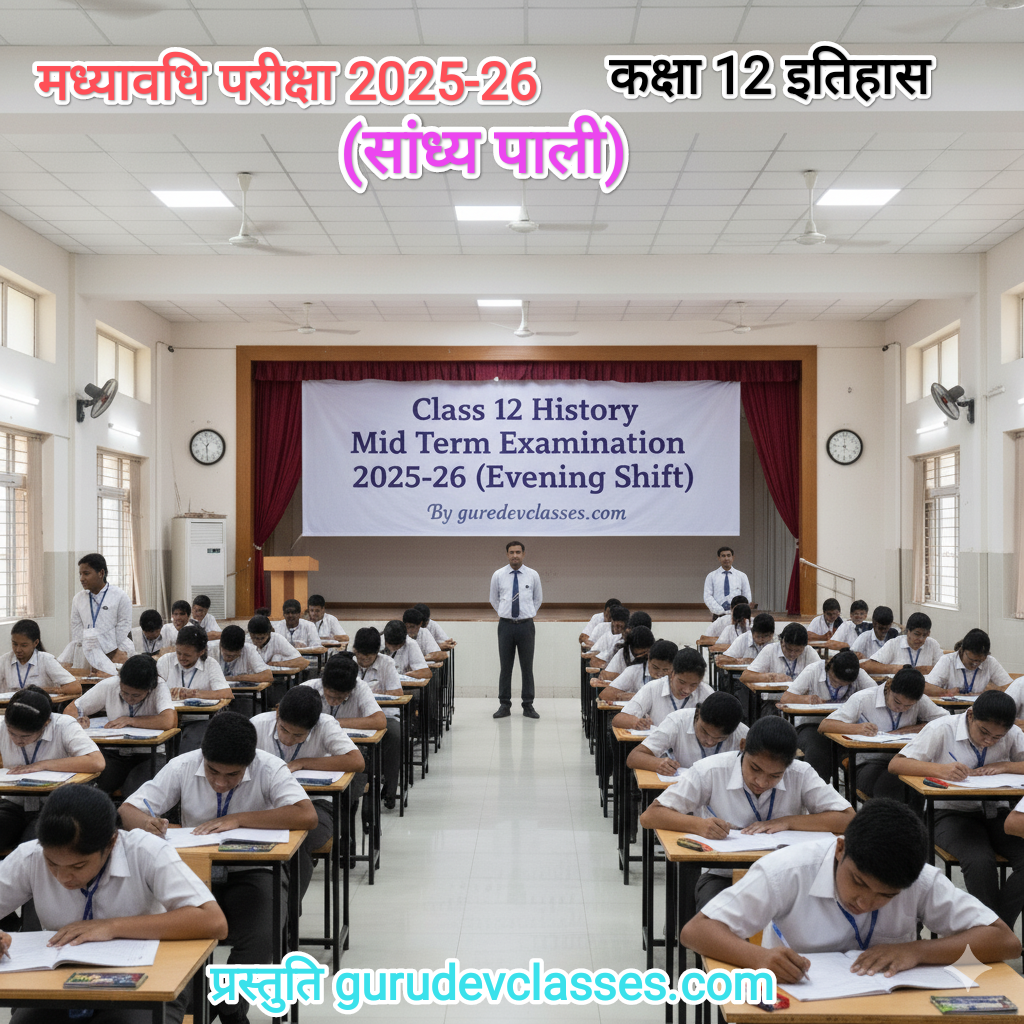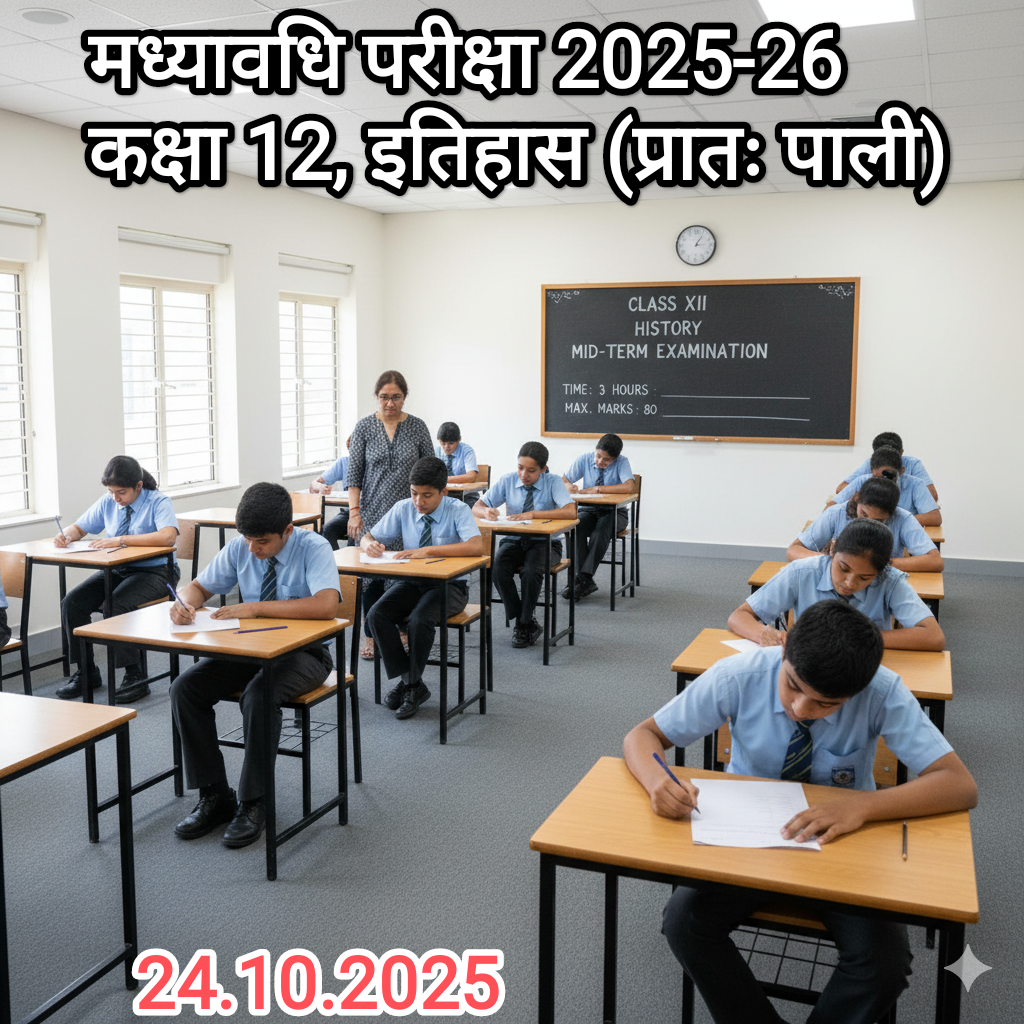Q1. What is Gotra? Explain its rules in the early Indian society.
(CBSE 2014, 2016)
Answer: Gotra refers to a patrilineal clan assigned to a person.
Believed to originate from a common male ancestor (usually a sage).
In early Vedic and Dharmashastra texts, especially among Brahmanas, it was mandatory not to marry within the same gotra to avoid incest.
Gotra identity was passed through the father.
Q2. What do you understand by ‘Critical Edition’ of the Mahabharata? (CBSE 2011, 2017)
Answer: The Critical Edition of the Mahabharata was a scholarly attempt to reconstruct the original text.
V.S. Sukthankar and a team at the Bhandarkar Oriental Research Institute, Pune, worked on it.
They compared over 1,200 manuscripts in various Indian languages.
Later additions were removed to arrive at a text as close as possible to the original.
It highlights how the text evolved over centuries.
Q3. How did Brahmanas develop a sharper social divide in ancient India? (CBSE 2015)
Answer: Brahmanas laid down Dharmashastras and ritual codes.
Emphasized the purity of Brahmanas and pollution of Shudras.
Prescribed strict rules for food, touch, and social interactions.
Opposed inter-caste marriages and mobility.
Used religious texts to legitimize the varna hierarchy.
Q4. What role did women play in the Mahabharata narrative? (CBSE 2018)
Answer: Women in the Mahabharata were often central to major events.
Draupadi’s humiliation in the Kaurava court triggered the war.
Women represented family honor, alliance, and conflict.
Some female characters expressed strong opinions and emotions, e.g., Gandhari, Kunti.
The epic also shows limitations and patriarchal control over women.
Q5. What is endogamy and exogamy? How did they function in early Indian society? (CBSE 2019)
Answer: Endogamy: Marriage within a particular group or caste.
Exogamy: Marriage outside a specific group, especially gotra.
In early Indian society:
Caste endogamy was strictly followed.
Gotra exogamy was mandatory among Brahmanas and upper castes.
These rules maintained caste purity and regulated social mobility.
Q6. “The Mahabharata is a dynamic text that evolved over centuries.” Explain the statement with reference to its content, composition, and historical importance.
(CBSE 2010, 2013, 2018, 2020, 2023)
Answer:
- A Dynamic & Evolving Epic:
The Mahabharata is not just a story of war but a cultural encyclopedia.
It reflects changing values, social norms, and power structures across centuries.
- Stages of Composition:
Originally known as Jaya (8,800 verses) – focused on the war between Kauravas and Pandavas.
Then expanded to Bharata (24,000 verses).
Final version: Mahabharata (over 1,00,000 verses) composed between 500 BCE – 400 CE.
Written in Sanskrit, believed to be compiled by Vyasa (traditionally).
- Themes in the Text:
Kinship and succession: dispute between cousins reflects patriliny and royal politics.
Dharma: Explores complex decisions between moral duty, family loyalty, and war.
Caste, rituals, and gender: Shows how social order was imagined.
Women’s roles: Draupadi, Kunti, and Gandhari are powerful yet constrained.
- Critical Edition:
Prepared by V.S. Sukthankar and scholars at the Bhandarkar Oriental Research Institute, Pune.
Compared over 1,200 manuscripts in various languages.
Goal: identify and remove later interpolations to find the original core text.
Shows that text was continuously edited, added to, and revised, indicating dynamic usage.
- Historical Importance:
Not a pure historical record, but reflects social and political life of early India.
Provides insights into kinship, caste, marriage customs, gender roles, and statecraft.
Used by historians with a critical lens to reconstruct early Indian social history.
- Conclusion:
Mahabharata is a layered, living tradition—shaped by time, beliefs, and debates.
It represents literature, philosophy, religion, and society in early India.
Q7. Explain the evidence that suggests early Indian society was patrilineal. How did it affect succession and inheritance? (CBSE 2012, 2016)
Answer: Patriliny = tracing descent through the male line.
Evident from Mahabharata, where sons inherited kingship and property.
Example: Dispute between Pandavas and Kauravas shows struggle for succession.
Dharmashastras prescribed father-to-son inheritance.
Women rarely inherited property (except in absence of sons).
Adoption of sons was allowed if natural heirs were absent.
Strengthened male authority in family and society.
Q8. Describe the rules and ideals about marriage during the early centuries CE as prescribed by Dharmashastras. (CBSE 2011, 2019)
Answer:
Marriage was seen as a sacred duty (dharma), not a contract.
Eight forms of marriage were listed in Dharmashastras.
The most respected was Brahma marriage – gift of daughter to a worthy groom.
Asura marriage (buying bride), Gandharva marriage (love), and Rakshasa marriage (abduction) were less ideal.
Kanyadana (gifting daughter) was central – father’s religious duty.
Polygyny was accepted for kings and elites.
Marriage rules aimed to preserve caste hierarchy and family honour.
Gotra exogamy and caste endogamy strictly enforced.
Q9. Explain the evolution and significance of the Varna system in ancient India. How did it affect people’s lives? (CBSE 2015, 2021)
Answer: Varna system divided society into 4 groups: Brahmana, Kshatriya, Vaishya, Shudra.
Developed in Vedic age, formalized in Dharmashastras and Manusmriti.
Basis: birth, occupation, ritual purity.
Brahmanas claimed supremacy as priests and scholars.
Shudras were meant to serve upper varnas – denied education and rituals.
Avarnas (Untouchables) were outside the varna system – faced social exclusion.
It determined food, dress, occupation, marriage, and social interaction.
Though rigid, some mobility existed through royal patronage or spiritual movements (e.g., Bhakti, Buddhism).
Q10. What does the Mahabharata tell us about the position of women in ancient Indian society? (CBSE2013, 2017, 2020)
Answer Women were central to family and political alliances (e.g., Kunti, Draupadi).
Marriage, reproduction, and household management were their primary roles.
Rarely inherited property; patriarchal norms restricted them.
Draupadi’s disrobing scene shows the vulnerability of women.
Some women showed agency and wisdom, e.g., Gandhari, Kunti, but mostly they were subordinate to men.
Text reflects male anxiety about female autonomy.
Q 9. Discuss the rules of marriage and the role of women in early Indian society as mentioned in Dharmashastra and Mahabharata.
(CBSE 2011, 2014, 2019)
Answer:
- Marriage as a Sacred Duty:
Dharmashastras and Manusmriti regarded marriage as a sacrament (sanskara).
Not for love, but for reproduction, family alliance, and religious merit.
- Types of Marriage:
Eight forms listed in Dharmashastra.
Brahma marriage: most respected – daughter given to a learned Brahmana.
Gandharva marriage: based on mutual love, seen as less ideal.
Asura marriage: where the groom pays bride price – discouraged.
Rakshasa marriage: by capture – glorified for warriors.
- Kanyadana and Gotra Rules:
Kanyadana (gift of a daughter): key ritual by the father.
Gotra exogamy: cannot marry within same gotra (lineage).
Encouraged caste endogamy and varna hierarchy.
- Position of Women:
Women were expected to be loyal wives and mothers.
Rarely received inheritance (except stridhan or in absence of sons).
Widow remarriage was discouraged, especially in upper castes.
Polygyny was common among kings and elites.
- Women in the Mahabharata:
Women had influential yet restricted roles.
Draupadi: central to the conflict; treated as a pawn but shows agency and protest.
Kunti and Gandhari: play strategic and emotional roles.
Reflects patriarchal control but also women’s resistance.
- Conclusion:
Early Indian society upheld patriarchal values, but literary texts like Mahabharata also reflected female voices, conflicts, and complexities in marriage and family life.
Q10. Explain how the caste system was organized in early Indian society. What were its key features and its social consequences? (CBSE 2015, 2021)
Answer:
- Four Varna System:
Society divided into Brahmana, Kshatriya, Vaishya, Shudra.
Varna hierarchy based on birth, occupation, and ritual purity.
Brahmanas: priests, scholars – considered pure.
Kshatriyas: warriors, rulers – defenders of dharma.
Vaishyas: traders, agriculturists.
Shudras: servants, laborers – to serve the above 3 varnas.
- Avarna (Untouchables):
Excluded from the varna system.
Performed polluting tasks (e.g., cremation, leatherwork).
Faced social exclusion, untouchability, and no access to temples or wells.
- Texts Justifying Hierarchy:
Dharmashastras and Manusmriti justified caste-based restrictions.
Prescribed rules for interactions, marriage, food sharing, and occupations.
Claimed Brahmanas emerged from the head, Shudras from the feet of Purusha (cosmic man).
- Jati System:
Over time, occupational jatis emerged (e.g., potters, weavers).
More flexible than varna, but still hereditary.
Governed by jati panchayats and local customs.
- Social Impact:
Restricted social mobility, justified inequality.
Created segregation, untouchability, and patriarchy.
Also led to resistance – seen in Buddhism, Jainism, Bhakti, Bhakti saints.
- Conclusion:
Caste system shaped social, economic, and political life in ancient India.
Though rigid, it faced critiques and adaptations across time.
Q11. “Historians use the Mahabharata as an important source to understand ancient Indian society.” Explain how the epic helps us understand kinship, caste, and gender. (CBSE 2017, 2020)
Answer:
- Mahabharata as a Historical Source:
Though a mythical text, Mahabharata contains social, ethical, and political themes.
Reflects norms, values, and conflicts of early Indian society.
- Kinship and Succession:
Tells the story of Kuru dynasty – disputes over inheritance and power.
Illustrates patriliny – property passed from father to son.
Women were used for alliances but excluded from succession.
3. Gender Roles:
Women’s voices are present but limited by patriarchy.
Draupadi’s humiliation raises ethical questions.
Shows female agency and suffering, but emphasizes male dominance.
- Caste and Social Order:
Reflects Brahmanical ideas of purity, varna dharma.
Mentions varna duties, caste mobility (e.g., Karna’s identity).
Discusses dharma conflicts across caste and kin.
- Historian’s Approach:
V.S. Sukthankar’s Critical Edition helps trace original content.
Historians use it with caution – distinguish prescriptive vs real practices.
Cross-check with archaeology, inscriptions, and other texts.
- Conclusion:
Mahabharata is a mirror of early Indian society, offering clues about social ideals, tensions, and transitions.







